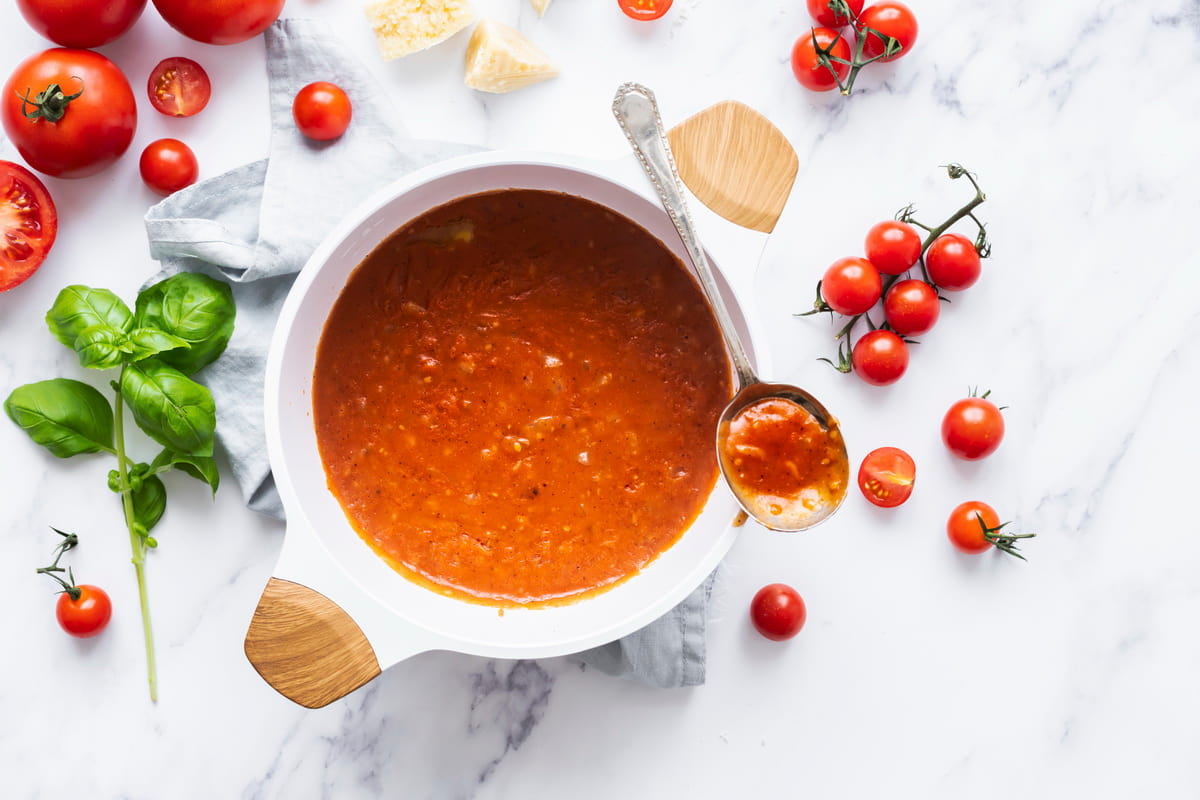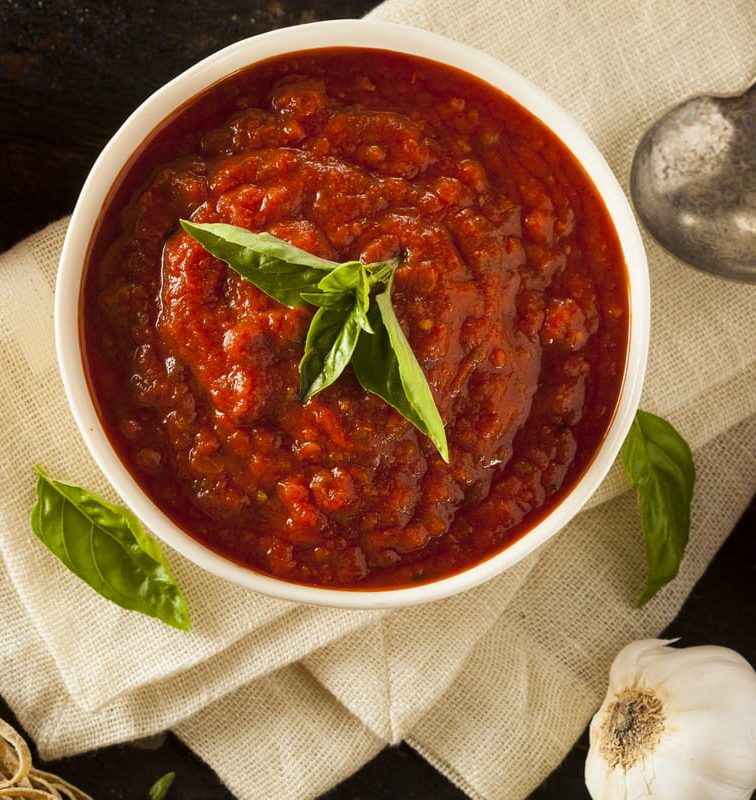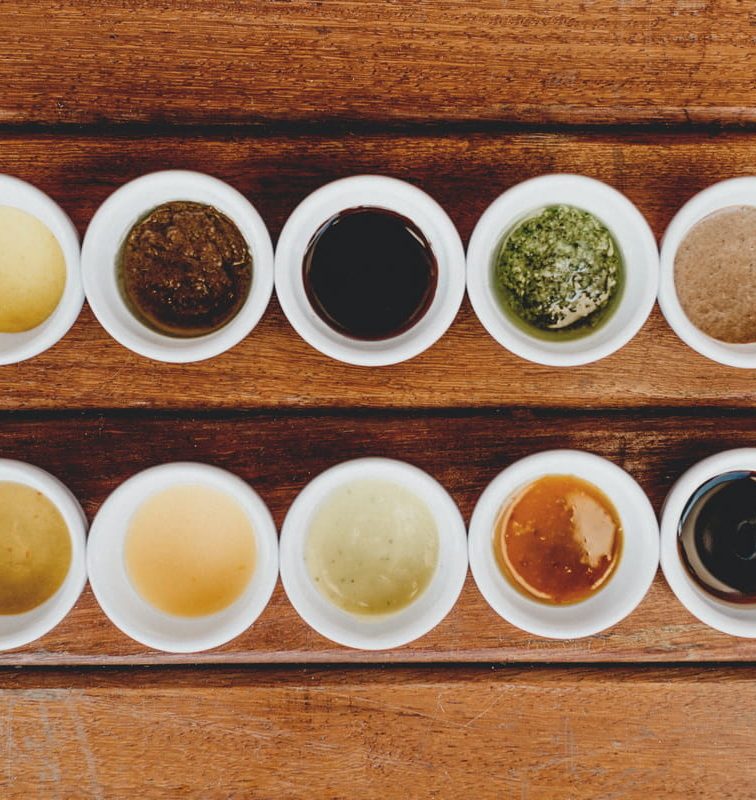Hey there, sauce enthusiasts and food lovers alike! Ever dipped a mozzarella stick into a warm bowl of marinara and wondered, “Hmm, what’s the story behind this?”
Well, you’re in for a treat because today we’re diving into 10 fun facts about marinara sauce. That’s right—this classic Italian staple has some intriguing history, cultural roots, and culinary versatility that you might not have imagined.
We’re gonna chat about everything from its sailing roots (seriously, you read that right) to why it doesn’t actually include fish (don’t let the name fool you). So grab a fork and maybe some garlic bread because we’re going on a flavorful journey of discovery!
1. Sailing Roots of Marinara
Ahoy there, matey! Ever wondered how this delightful sauce got its name? Well, it all harkens back to the 16th century and has to do with sailors—or “marinai” in Italian. Yes, marinara sauce was supposedly crafted to feed sailors on long voyages. Why? Because it didn’t spoil quickly!
The ingredients like olive oil, garlic, and tomatoes acted as natural preservatives. So, while you’re chowing down on your spaghetti, think of the brave sailors who survived ocean journeys with a little comfort food.
2. The Basic Four: Oil, Garlic, Tomato, Onion
It doesn’t take a Food Network star to whip up some homemade marinara, but what you do need is the fab four: olive oil, garlic, tomatoes, and onion. That’s right—no high-level chef wizardry here. Just good ol’ down-to-earth ingredients that when combined, make magic.
But beware, your olive oil choice can make or break the sauce. A good extra-virgin olive oil lays the foundation for the rich flavor. Add in your garlic and onions, let them sizzle, then pop goes the tomato!
3. Tomatoes: New World Meets Old
Hold on to your aprons, folks! The tomatoes we all love in our marinara weren’t originally Italian. They were a New World addition. It wasn’t until the late 16th century that tomatoes were introduced to Europe from the Americas.
The acidic, juicy wonder of a tomato was initially eyed with suspicion. But soon, the Italians adopted it and—voila—it became the heart and soul of the marinara we all adore. Next time you’re cooking up some tomato sauce, remember you’re partaking in a cultural merger of epic proportions!

Pixabay / Pexels
4. Marinara: No Fish Allowed!
Raise your hand if you thought marinara sauce involved fish because of its nautical name. Don’t worry; you’re not alone. Despite the maritime origins of its name, marinara sauce is a fish-free zone. Confused? We get it; the term “marinara” does make one think of the sea and all its briny inhabitants. But nope, marinara is all about those tomatoes, garlic, and that golden olive oil.
Why the misleading name? Remember the sailors we mentioned? “Marinara” derives from “marinaro,” meaning ‘of the sea,’ but it refers to the sailors, not seafood!
5. Naples: Marinara’s Home
Pack your bags, foodies! We’re going on a virtual trip to Naples, Italy—the birthplace and home of marinara sauce. While Italians all over the boot-shaped peninsula love their marinara, the sauce’s historical roots sink deepest in Naples. This coastal city has been cradling marinara in its culinary bosom since way back when.
So the next time you spread that sauce on your pizza or drown your spaghetti in it, tip your hat to Naples. Or better yet, plan a culinary pilgrimage!
Learn some fun facts about sauces as well.
6. Not Just For Spaghetti
Hey, spaghetti lovers, don’t shoot the messenger! While marinara might be your go-to spaghetti sauce, this versatile concoction has other plans. From pizza to meatballs, and even as a dipping sauce for your fried calamari, marinara wears many hats.
Think beyond the pasta bowl. Marinara’s rich flavor and taste make it the perfect accompaniment for a variety of dishes. So go on, experiment a little!

Rene Strgar / Pexels
7. Sweet & Savory Marinara
Ever wondered why your marinara sauce tastes a little sweet even when there’s no sugar in sight? It’s all thanks to the natural sweetness of tomatoes. But that’s not all; marinara has that unique sweet and savory balance that tickles your taste buds in the best way possible.
The onion and garlic lend that savory oomph, contrasting beautifully with the natural sugars in the tomatoes. The result? A sauce that’s rich, complex, and utterly delicious. Flavor-town, here we come!
8. Marinara: Hot or Cold?
To heat or not to heat—that is the question. While we often enjoy marinara sauce piping hot over a bed of spaghetti, it’s also scrumptious when cool. Think bruschetta or a cold pasta salad.
Temperature changes the sauce’s flavor profile. Heating it melds the ingredients together, giving you a unified taste. When cold, individual flavors stand out more. Hot or cold, marinara is a crowd-pleaser.
9. Why Italians Call It “Salsa”
We’ve talked about what we call it, but what about the Italians? In Italy, especially in its southern parts where marinara hails from, it’s often just referred to as “salsa,” which translates to sauce. Yep, it’s that iconic. For Italians, this is THE sauce, no fancy adjectives needed.
This sauce embodies the essence of Italian cooking: simple ingredients delivering extraordinary flavor. So, whether it’s salsa or marinara, the deliciousness remains universal.
10. The Hollywood Connection: Marinara’s Cameo Appearances
Now here’s something you probably didn’t know—our beloved marinara sauce has made its fair share of cameo appearances in Hollywood! We’re not talking cooking shows or Food Network specials here; marinara has subtly flavored some iconic movie scenes.
From the spaghetti date in “Lady and the Tramp” to the backdrop of mob meetings in “The Godfather,” this versatile tomato sauce has earned its SAG card. It’s the Kevin Bacon of sauces, folks—somehow connected to every dish and every genre of film!
FAQ
Why was marinara sauce invented?
Picture it: the bustling ports of Naples, Italy, back in the 16th century. Sailors (marinai) returned from the New World with tomatoes—shiny, red, and packed with sunbeams. Marinara sauce was invented as a simple, quick-to-cook sauce for these seafarers. It was made from easily preservable ingredients that wouldn’t spoil during long voyages: tomatoes, garlic, herbs, and olive oil.
What is another name for marinara sauce?
Marinara sauce goes by its own esteemed name and doesn’t really have a ubiquitous synonym. Though you may hear it colloquially referred to as “red sauce” or “spaghetti sauce,” those terms can encompass a variety of tomato-based sauces that may not strictly adhere to the simplicity of marinara.
What is the purpose of marinara sauce?
The primary role of marinara sauce is that of an enchanting companion. It serves to elevate dishes, offering its luscious texture and vibrant flavor as a partner to pasta, a confidante to crusty bread, and a suitor to seafood. It’s versatile and universally beloved, like the Meryl Streep of sauces.
Does marinara mean seafood?
Ah, a linguistic curveball! In Italian, “marinara” is derived from “marinaro,” which means “of the sea.” But contrary to its nautical nomenclature, marinara sauce does not include seafood. It’s like calling someone “tiny” when they are, in fact, the height of a basketball player—charmingly misleading.
Why is marinara sauce orange?
The alluring orange hue of marinara sauce is a tango between the redness of ripe tomatoes and the golden notes of quality olive oil. Blend them together, and voilà—you’ve got a sauce the color of a sunset on the Amalfi Coast.
What do Italians call marinara sauce?
In Italy, “salsa marinara” is typically just called “salsa di pomodoro,” which translates to “tomato sauce.” It’s all about getting straight to the point: what’s in it is what it’s called. It’s the essence of Italian culinary philosophy—simplicity and quality over everything.
Who invented marinara sauce?
The exact individual responsible for the invention of marinara sauce is lost to the mists of time (those mists probably smell delicious). What is widely agreed upon is that the sauce originated in the Naples region in the 16th century, shortly after tomatoes were introduced from the Americas.
Why does marinara sauce taste sweet?
The sweetness in marinara sauce is like an aria sung by the ripe tomatoes, serenading your taste buds. Tomatoes naturally contain sugars, and when you cook them down, their flavors concentrate, tickling your palate with both savory and sweet notes. Some chefs might add a pinch of sugar to counteract the acidity, but a well-balanced marinara often achieves sweetness naturally.
What makes marinara sauce better?
Ah, the secret alchemy of elevating the sauce! Use fresh, quality ingredients; that’s the cornerstone. You can add a bouquet of basil for aromatic bliss, a dash of red pepper flakes for a spicy kick, or a splash of wine for nuanced depth. But remember, like any true diva, marinara needs time to shine. Slow cooking allows the flavors to marry in a blissful union that’s pure culinary matrimony.
Is marinara sauce eaten hot or cold?
While marinara sauce is most commonly served hot, it can also make a ravishing appearance when chilled, like in a cold pasta salad. However, its flavors truly bloom and fill the room when warmed, like a soprano hitting the high note. To serve it cold is like listening to an opera over the phone—still good, but not at its most magnificent.











